
- Home
- Age
- 1800-1849 (10)
- 1850-1899 (835)
- 1867-1912 (4)
- 1868 - 1912 (5)
- 1868-1912 (38)
- 1870-1930 (7)
- 1880-1912 (8)
- 1880-1920 (4)
- 1890-1910 (6)
- 19th Century (20)
- 20th Century (6)
- Ca 1900 (6)
- Early 20th Century (48)
- Late 19th Century (30)
- Meiji (15)
- Meiji Period (8)
- Post-1940 (343)
- Unknown (95)
- 1900 (10)
- 1900-1940 (634)
- ... (1923)
- Brand
- Culture
- Maker
- Ando (41)
- Ando Cloisonne (20)
- Ando Jubei (27)
- Ando Jubei Nagoya (7)
- Ando Workshop (22)
- Cloisonne (21)
- Gonda (5)
- Gonda Hirosuke (6)
- Hiroaki Oota (8)
- Japan (36)
- Japanese (10)
- Japanese Craftsman (159)
- Kumeno Teitaro (9)
- Sato (27)
- Shuzo (9)
- Tamura (8)
- Unknown (192)
- Unknown Artist (15)
- Unsigned (20)
- Yamamoto (6)
- ... (3407)
- Material
- Pattern
Japanese Cloisonne Kyoto Shippo Style Antique Meiji Vase Yasuyuki-Inspired 5
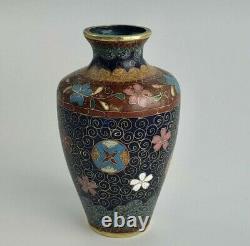
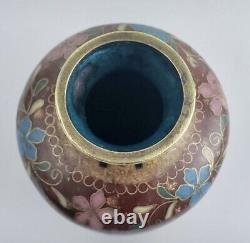
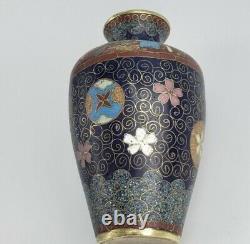


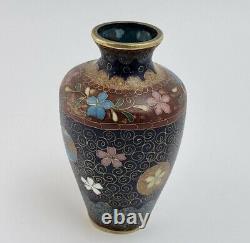
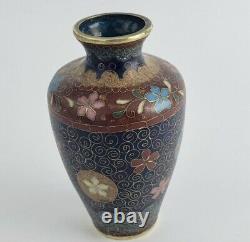


Product Description: Japanese Cloisonne Kyoto Shippo Style Design Vase Meiji. It is an unmarked piece, which was typical for cloisonné.
Pieces in Japan of this era. We believe it to be inspired or even created by Namikawa Yasuyuki. This is because of the way it was designed: with deep muted colours and elaborate, opaque motifs and roundels. The overall effect is that of a textured fabric design.
The vase stands at 5 inches tall. Yusen (with wire) technique on a copper body has been used.The interior of the mouth opening has an orange peel texture. The top rim outer wall has a band of small red circles which form a border and mustard colour fish scales against a deep navy blue enamel ground. The same patterns are repeated below. Blossom flowers in yellow and blue against a brick red background with elaborate scrollwork grace the shoulders of this vase.
It should be noted that this section specifically has tea dust. The main body of the vase has the same deep navy blue enamel ground. On this, small, tight cloisonné spiral motifs fill up the space.
In between, there are blossom flowers scattered, almost giving a floating effect. The last section has a semicircular fish scale patterns in a mustard colour and a red brick border that rests upon a metal base. There is some minor pitting. Enamel loss above the top brick border.
We had to look closely to notice this as the enamel loss was camouflaged with the red brick background. An enamel first used by Namikawa Yasuyuki in 1875 or so, he used mustard yellow enamel backgrounds mostly for this innovation, it is a speckled opaque enamel with tiny black particles or fine dust texture.
The importance of spirals in Japanese Cloisonne. The term strength wiring is used for wiring that is not primarily for decoration but to help ensure that the enamel did not become detached. Primary Material: Cloisonne, copper, enamel.
Featured Refinements: Japanese Cloisonne Vase. This item is in the category "Antiques\Asian Antiques\Japan\Vases".
The seller is "antiquehaus" and is located in this country: CA. This item can be shipped to Canada, all countries in Europe, United States.
- Primary Material: Cloisonne
- Region of Origin: Japan
- Color: Blue
- Original/Reproduction: Antique Original
- Design style: Kyoto Shippo Style Design
- Height: 5\
- Age: 1870-1910

